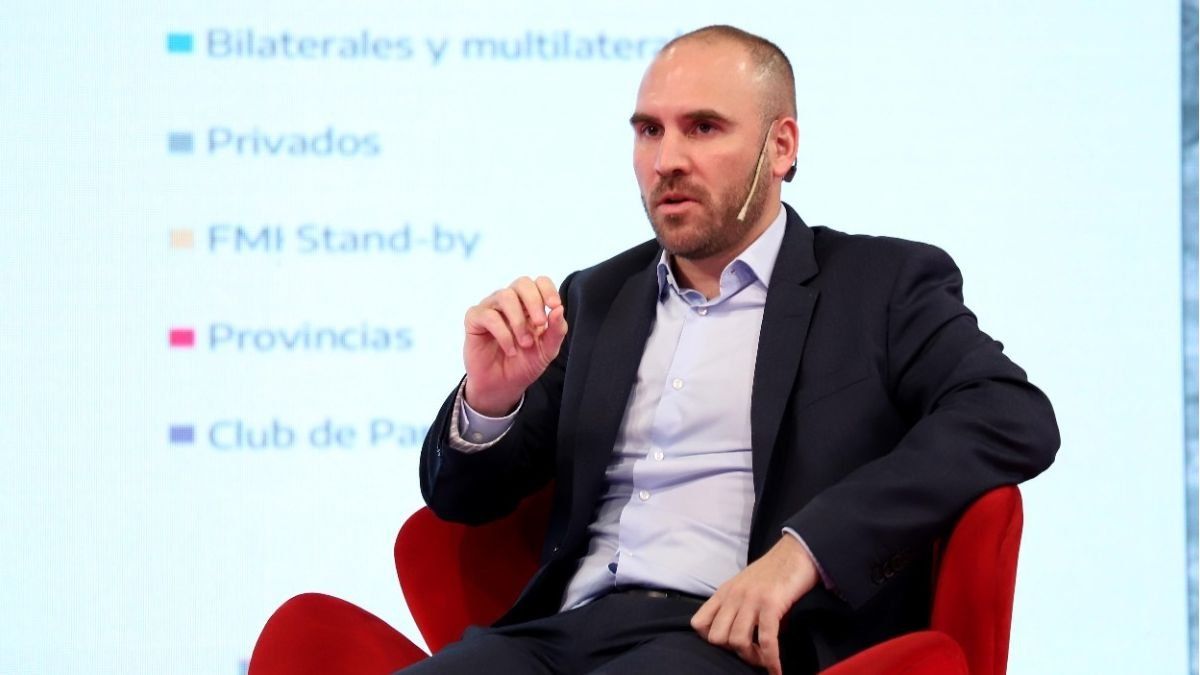To do this, it will appeal to a debatable resource and another indisputable: on the one hand, it will ask the legislators for express ratification without any kind of amendment of the points agreed with the IMF. On the other hand, it is already negotiating in Washington the possibility of receiving a first disbursement that could exceed US$10,000M to shore up reserves, prior to the payments that Argentina must make to the Fund.
As mentioned, the question that the Government is asking itself at this time is whether, in this new agreement with the IMF, it cannot also become “with a low probability of being sustainable.” And this is due to no minor detail: if the IMF makes a disbursement of US$44,000M to pay US$44,000M in just two and a half years… what would be the tools that would help prevent a situation of increased tension and crisis? In other words, how would the BCRA add a greater amount of Dollars What would allow him to stabilize the financial front if the IMF itself could only grant him some US$4,000M in SDRs additional to the amount of the original loan that must be repaid, apart from the fact that it requires him to accumulate US$5,000M this year? For this reason, a first strong disbursement is negotiated that should arrive between March and April.
time trial
If this idea prospers, the letter of intent already signed by the agency’s board will arrive at the venue at the end of March.
If the passage through Deputies fuels huge portions of uncertainty, that of the Senate -Christian terrain- sediments bewilderment. A delay in those parliamentary latitudes could insufflate additional pressure. It is that on the 22nd of that month, US$2.8 billion expires. Without sufficient reserves, the scenario does not give optimism. February is historically a month with the lowest supply of dollars and the lowest demand for pesos. The closeness with the negotiation in Congress could be a cocktail to pay attention. Only in mid-March does the agricultural currency settlement period begin, which lasts, at least, until October 2022.
That is to say that, once again, the Government will be required by an exhausting fixture that could leave it out of the game, since, if it does not have the endorsement of Congress, there will be no disbursements from the IMF to pay the US$2800M.
Summing up, and in very synthetic terms, we are talking about an Extended Facilities agreement with a duration of 12 years and a grace period before starting to pay with own resources. Said agreement has a series of quantitative fiscal, monetary and foreign exchange (reserve) goals with a horizon of 2.5 years. It also has a controversial quarterly review scheme (which also seeks to make it more flexible) whose approval depends on the release of disbursements to cover maturities. In addition, a three-year grace period that, for some analysts, acts as a “sweetener” for Argentina to get out of the critical reserve situation in which it finds itself today (or at least trying to).
The conditions are here
There is, however, a detail whose enigmatic derivations have not yet stopped its course. Although there is an absence of any commitment to structural reform, this “absence” is recorded only in the first 2.5 years of the agreement. As of 2024, the IMF itself would lower all its orthodox tools to negotiate the Extended Facilities agreement as it is known. That negotiation would take place, attention, with the newly elected government. What if the IMF preferred to kick off the negotiation in 2022 and 2023 in order to advance in a scheme of reforms and conditions with the newcomers to the Casa Rosada at the beginning of 2024? Remember that 2025 is the year in which the Government commits to having a zero deficit, so from then on the Fund could begin to progressively request surplus steps, as it has already done in other countries with debts.
All in all, one of the central problems that has not yet been said “present” in Guzmán’s powerpoint is the fate of the dollar and its long upward march. If what is sought is to reduce the gap, what was agreed with the IMF for the first 2.5 years would not immediately result in that need. As was said, there are not enough reserves and the monetary policy tools such as the interest rate hike do not have the forcefulness that could sustain this level of the real exchange rate as the BCRA has pointed out. Even less, meet the reserve accumulation objective that was announced. Although the political decision not to make an exchange rate jump is in place, it is likely that the BCRA will have to recalculate and calibrate more closely the speed at which it intends to calculate the sliding of the peso to strengthen its position in dollars in order to meet the agreed goals. . If, in exchange matters, the priority is to reduce the gap, the rise in interest rates and the reduction in the inflation rate would imply a push to generate greater demand for pesos. But it has been difficult, until now, to achieve an effect of
Source: Ambito
David William is a talented author who has made a name for himself in the world of writing. He is a professional author who writes on a wide range of topics, from general interest to opinion news. David is currently working as a writer at 24 hours worlds where he brings his unique perspective and in-depth research to his articles, making them both informative and engaging.




